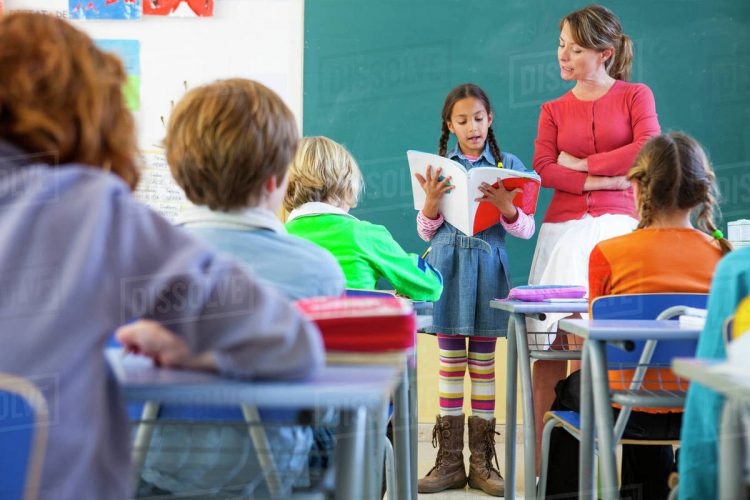A Schoolwide Focus on Improving Students Reading Skills

Improving student reading skills, We’re all at home with knowledge correlating student effort with family financial gain and quality. Such data, critics claim, reveal that schooling tends to kind students per the pre-existing social system. And, in therefore doing, reproduces existing inequities. To improve student reading skills counter that at Hopkins Elementary in Littleton, Colorado, our workers were firm to assist all students to learn and therefore attain additional just outcomes.
The key to achieving additional just outcomes is to obviously effective training that matters most so be constant in serving to all students to urge there. We have a tendency to center on students’ reading efforts as our prime priority. We have a tendency to began the year with an associate assessment of each student’s reading level and set specific individual goals. And stating what we have a tendency to expect every student to realize by could.
We have a tendency to wanted grade level proficiency for each student. That we expected a minimum of one year of growth for each student also. However, for those performing arts below grade level. We have a tendency to expect up to 1 and 0.5 years of growth so they might slender, if not eliminate, their learning gap.
INTENTIONALLY UNEQUAL
Without this intentional and planned commitment to learning. It’s way too simple for educators to slide into the de facto role of ranking students. Once this happens, considerations concerning fairness usually center on preventing cheating. And on treating each student equally as academics work to take care of what they see as good competition for the grade trade goods.
Guided by teacher leaders and our leadership team, we have a tendency to hold a special idea of fairness. Grounded within the basic beliefs that each one child will learn which it’s our job to create it happen. We have a tendency to understood fairness to mean giving every student what he or she required.
With this idea of fairness in mind, we have a tendency to create a whole reading amount designed to treat children unevenly. Specifically, among our skill block, we have a tendency to eliminated target-hunting reading. And replaced it with differentiated reading instruction (DRI). This 40-minute amount provided the chance for academics to tailor instruction to deal with known ability gaps.

During this block, academics sorted students per their assessed wants. These teams, that replaced target-hunting reading teams, short-run, and fluid, shifting as students wish to be shifted. We have a tendency to used a spread of tools to diagnose wants and monitor growth, as well as the grammatical Awareness Screening, take a look at (PAST). The CORE teaching reading Survey. The Words Their means writing system Inventory, fluency regular readings, and others. These techniques are used for improving student reading skills
Teachers selected 2 areas of educational focus victimization. Sharon Walpole and Michael McKenna’s psychological feature reading model, supporting students as they developed phone awareness, word recognition, fluency, improved vocabulary, and reading comprehension skills.
Improving Student Reading Ability

We shake our DRI block by grade level therefore our reading interfering and education academics may “push-in”. Room and work with each teacher to supply further differentiated educational support to each student who required it. This side support created several choices for differentiation. There may be two tiny teams in an exceedingly given room receiving direct instruction. Instead, a specialist may co-teach a pack, or work one-on-one with individual students.
Every six weeks, we have a tendency to met as knowledgeable learning communities to review formative knowledge and arrange consecutive DRI phases of learning. Academics regrouped their students per recent knowledge, distinctive to updated areas for educational focus and setting new short-run growth goals.
Most notably, academics cooperates—sharing with grade-level teammates their most in educational methods, seeking support from our skill coach in cases. And teaming with our education workers and reading specialists to make sure that further attention, time, and resources applied wherever the requirement greatest.
To evaluate the effectiveness of this initiative, our leadership team developed an associate implementation rubric. This form functioned as a tool for room observation and enabled the U.S. To style current skilled development supported these observations and on knowledge particularisation student growth.
MEASURING WHAT MATTERS
Finally, a crucial part of this initiative was our all-staff year-end meeting, throughout that every teacher consults her or his category knowledge to colleagues. It had been each a celebration and a sort of accountability—to one another and to our students. This year-end meeting needed exposure on the part of our academics. As they stood before colleagues, detailing students’ goals and the way many students were practiced.
The p.cage of our students who were at grade level as expected by Measures of educational Progress (MAP) exaggerated from sixty-nine p.c. Once we began this initiative to eighty-eight percent among 3 years. Additionally, improving student reading skills scholars growing a minimum of median jumped from solely forty p.c at the baseline to fifty-eight percent.
Teachers worked all year knowing that within the finish what would be measured. And what actually notice was every and each student’s learning. As a result, if we have a tendency to area unit to be an entry to chance. Instead of a gatekeeper of the established order, giving students what they have is simply honest.
I’d prefer to categorical my feeling to Dr. Barbara Trenholme for her contributions to the current article.




